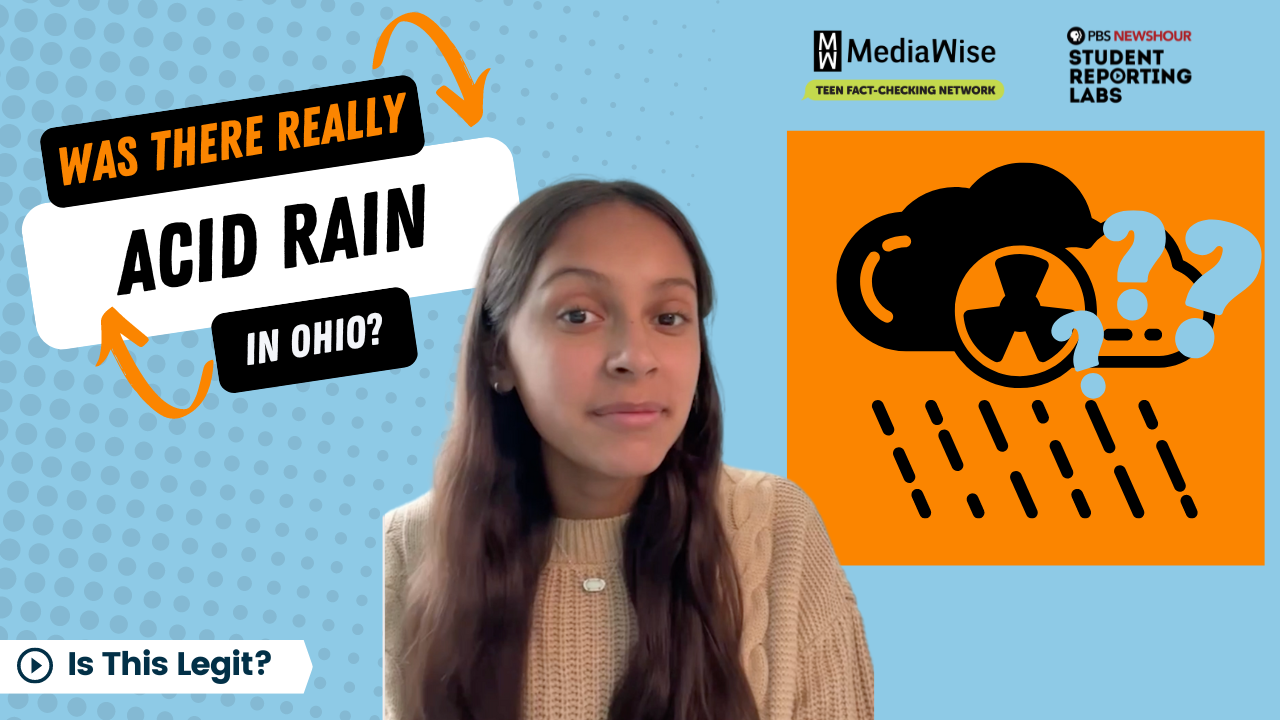A TikToker with the handle “Kate the Chemist” claims that acid rain fell in Ohio after the train derailment on Feb. 3. Her TikTok has more than 80,000 likes and more than 4,000 shares … but is it true?
Here’s how we fact-checked it.
Who’s behind the information?
A good media literacy tip to use when figuring out if an online claim is true is to find out who is behind the information. In this case, we checked Kate Biberdorf’s bio. It says she has a doctorate and is a chemist, professor and best-selling author, which sounds pretty impressive.
These are all really green flags, but misinformation can be sneaky. Even if someone claims to be an expert, you shouldn’t just take their word for it.
Do some lateral reading
I started with some lateral reading. I left the TikTok platform and did a keyword search for “Kate Biberdorf.” I opened up a bunch of new tabs, including one from the University of Texas at Austin staff contact page, which said she is an associate professor of instruction in the chemistry department. In another tab, I searched her name and clicked the “News” filter to see if anyone’s written about her work and discovered that The New York Times ran an article about her in 2022. She seemed legit!
Look into the evidence
Next, I checked out the evidence. I searched for “Ohio acid rain,” and found a lot of links on this topic, including social media posts, news articles and fact checks.
When you’re unsure of a particular website, especially if it’s one you’ve never heard of before, it’s good practice to open new tabs and see what other reputable sources say.
I found this article from USA Today, which fact-checked another social media post about this same claim that a train derailed in Ohio on Feb. 3, and that smoke from a resulting fire caused acid rain in the area. The article says some of the derailed cars contained a hazardous gas called vinyl chloride, “which breaks down into hydrochloric acid, a component of acid rain.”
But USA Today interviewed James Lee, a spokesperson for the Ohio Environmental Protection Agency, who said there had been no sign of hydrochloric acid rain in Ohio.
Check other experts
It never hurts to check out other experts. So I also read this fact-check from PolitiFact, which quotes a professor from Ohio State University’s atmospheric science program who made an important point: For there to be acid rain, it needs to rain! And by the time it did rain — five days after the accident — the chemicals would have been gone.
Our rating
Not Legit. This was a scary claim made during a breaking news event, when it’s easy to get caught up in the moment. Bottom line: Always read a lot of different sources to get the full story during a crisis.
NOTE TO TEACHERS: This article is featured in a free, one-hour lesson plan that teaches students how to check multiple credible sources during a breaking news event. The lesson is available through PBS LearningMedia, and includes a lesson summary and a handout, among other resources.






